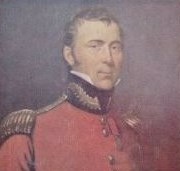Copenhagen. The very name of the Danish capital conjures exotic images of a bustling, modern city with an infamous red light district; a centuries-old port, evolved from a fortification built in 1167 to protect a ferry crossing; battles on the high seas and an international political centre.
It was also the name of a horse.
That horse was not just any old horse, though. He was the famed mount of a revered general. He was the war horse of no less a personage than the Duke of Wellington and carried his master throughout the whole of the Battle of Waterloo.
Copenhagen’s story begins at the siege of the city which gave him his name. His dam was the half-bred mare, Lady Catherine, bred by Thomas Grosvenor and, it is believed, ridden by him during that conflict. Lady Catherine’s dam was by the Rutland Arabian, ‘out of a hunting mare not thorough-bred’ according to The General Stud Book and was put to the successful racehorse and stallion, John Bull. This meant that although John Bull was full Thoroughbred and Copenhagen was sired by Meteor, second in the Derby of 1786 and son of the legendary Eclipse, Copenhagen was not eligible for the General Stud Book because of his grand-dam’s hunter blood. Lady Catherine is the only half-bred mare included in the stud book ‒ in deference to his honourable military career.
Meteor was tiny by today’s standards, measuring about fourteen hands, but Copenhagen took after his grandsire in colour, height and temperament. Foaled in 1808, he was chestnut (as was his father), stood about fifteen hands high (a hand is four inches, a horse being measured to the base of the neck where it joins the body) and could be bad-tempered, being prone to lashing out with a hind leg. He is described as being muscular and compact, having two white heels, a hollow back and poor shoulders… and, conversely, as being a handsome horse. He was painted by Thomas Lawrence and Samuel Spode as a rich, dark chestnut, but with dissimilar white leg markings. In the Spode painting, he has one white sock on his near (left) hind leg. There are no obvious white markings on his legs in the Lawrence depiction and in a painting of the pair at Waterloo by Robert Hillingford, he would appear to have four white socks. We shall never know, now, which is the most accurate, but one thing is certain. The stallion had a quality which drew the eye and fired the imagination.
In all three paintings, he is a striking individual, his proud bearing, fine legs and sturdy conformation clearly reflecting his Arabian bloodlines. The qualities of the ‘Oriental’ horse were appreciated by the knowledgeable cavalry soldier, for on campaign, horses may receive little in the way of fodder while enduring the harshest of conditions. Toughness was a prime requisite. Wellington is quoted as saying of his famous horse: ‘There may have been many faster horses, no doubt many handsomer, but for bottom and endurance I never saw his fellow.’ Such stamina is the hallmark, not only of the Thoroughbred, but of the three Arab stallions from whom the breed evolved.
However, the Duke of Wellington and his illustrious horse had yet to meet. Despite his lack of a full pedigree, Thomas Grosvenor had bred Copenhagen to race, but although a quick colt, he had not inherited either Meteor’s or Eclipse’s speed. He did not run as a two-year-old and his two seasons were undistinguished at best, resulting in only two wins. He retired from racing in 1812, at the end of his four-year-old season and was sold to Sir Charles Stewart, (later the Marquis of Londonderry) who took the stallion to the Peninsula.
Not a favourite of the future Duke of Wellington, Sir Charles fell foul of the Field Marshal on several occasions, finally, so the story goes, being reduced to tears for remarks made in the Morning Chronicle. Soon after, Stewart was offered a post as Minister to Prussia – possibly through the good offices of his half-brother and Foreign Secretary, Lord Castlereagh. However that may be, towards the end of 1813, Sir Charles, being short of funds and no longer in need of a stable of horses, sold Copenhagen and one other to Colonel Charles Wood (or Colonel Alexander Gordon) on behalf of one Arthur Wellesley.
When Copenhagen arrived in the Marquis’ stables (Wellington was not made a duke until 1814) he caused no small amount of concern. Not only was his temperament uncertain, he had a particularly unusual idiosyncrasy. All horses will lie down in their stable, given that the bed is deep enough and they are comfortable in their surroundings. However, they eat standing up; hay from a hay rack or net, feed from a manger or bucket. Copenhagen had a hearty appetite, for corn feed especially, but he would eat it whilst lying down. Until they determined that there was nothing wrong with their expensive new charge, he no doubt gave the Marquis’ grooms many a sleepless night!
A true horseman, Wellington quickly realized that his chestnut charger needed plenty of occupation. He already maintained his own pack of hounds as well as a pair of hunters for his leisure hours in the Peninsula, since his battle horses were not suitable for the sport. Copenhagen, on the other hand, revelled in the work and the freedom from his stable. The discipline of standing quietly and then galloping when hounds set off developed the five-year-old’s fitness and hardened his legs and tendons. Days in the field developed a relationship between horse and rider which was to be indispensable. The two seasons Copenhagen had spent on the race courses of England had accustomed him to noise and clamour. The pieces of the jigsaw were fitting together to create a legend; a horse whose name would go down in history.
In her diary, Lady Frances Shelley states that: ‘On the day before the battle, the Duke rode Copenhagen to the Prussian headquarters, to ascertain whether he might depend on old Blücher’s co-operation.’ This belief is also reflected by the Reverend Charles Young, who was staying with the Rt. Hon. Henry Pierrepoint in 1833 when the Duke himself apparently related the tale. The Duke is reported to have said, ‘Before ten o’clock I got on Copenhagen’s back… I never drew bit, and he never had a morsel in his mouth, till 8pm, when Fitzroy Somerset came to tell me dinner was ready in the little neighbouring village – Waterloo.’ He went on to claim that he sent Fitzroy Somerset off on an errand, ‘ordered Copenhagen to be re-saddled’ and himself rode out some fourteen miles and back to confirm how matters stood. Some modern historians believe this tale to be a fabrication and that an aide-de-camp made the journey and returned with the message promising assistance from the Prussians. It is a more likely version of events, but if not… the possibility of having carried his master another twenty-eight miles on top of his day’s work and then be ridden the following day during the battle itself, adds to Copenhagen’s considerable lustre and reputation for bottomless endurance.
What is irrefutable fact, however, is that while Napoleon rode probably three or four horses during the battle and covered considerably less ground, the cranky chestnut stallion was Wellington’s sole mount for the whole of that long, momentous day – a stretch of almost eighteen hours. Calm and composed amidst the smoke and mayhem of the battlefield, the very sight of the powerful horse and his rider cheered the Allied forces into greater endeavours and helped them stand firm when the odds were against them. It is little wonder that the illustrious pair were fêted by all and sundry when they finally arrived home victorious.
In due course, the Duke moved to Paris and thence to Chambrai in his role as Commander-in-Chief of the Army of Occupation, taking Copenhagen with him. He rented a house in Mont St. Martin and took his old friend hunting when his duties permitted. Wellington held house parties, mock battles and military ceremonials, and both man and horse enjoyed the attentions of the ladies, both English and French.
This continued when the army at last returned to England, the Duke acquiring Apsley House from his brother. Wellington kept and rode Copenhagen in London until he became too busy, when he sent him to his Hampshire home, Stratfield Saye.
Copenhagen enjoyed a peaceful retirement and was finally laid to rest with full military honours in his paddock near the Ice House. Mrs. Apostles, the Duke’s housekeeper, planted the Turkey Oak which now casts shade over the stallion’s grave. The marble stone was laid some years following the Duke’s death, by the second Duke.
I will be telling Copenhagen’s story in more detail on my Blog A Regency Reticule, later in the year. http://regencywriter-hking.blogspot.co.uk

June 18, 1815 was the day Napoleon Bonaparte’s Grande Armée was definitively routed by the ragtag band of soldiers from the Duke of Wellington’s Allied Army in a little Belgian town called Waterloo. The cost in men’s lives was high—22,000 dead or wounded for the Allied Army and 24,000 for the French. But the war with Napoleon that had dragged on for a dozen years was over for good, and the British people once more felt secure on their island shores.
The bicentenary of the famous battle seemed like an excellent opportunity to use that setting for a story, and before we knew it, we had nine authors eager to join in, and on April 1, 2015 our Waterloo-themed anthology was released to the world.
You are all invited to
About Copenhagen’s Last Charge
When Meg Lacy meets a broodingly handsome Light Dragoon at the Duchess of Richmond’s grand ball, she little expects that in the early hours of June 19th she will be accompanying him around the streets of Brussels after the Duke of Wellington’s horse, Copenhagen.
Lieutenant James Cooper is surly and unhelpful, but Meg senses the Dragoon will need her help to catch the valuable horse before he injures himself. As they bicker their way around the narrow streets in Copenhagen’s wake, a strange empathy develops as gradually glimpses of the man beneath start to be revealed. Meg finds herself drawn to that person, but when they finally return the horse to the Duke and Cooper assumes the credit, Meg is so incensed she vows to have nothing further to do with him.
Fate, it seems, has other ideas…
Amazon.com • Kobo • iBooks • Barnes & Noble
Amazon.ca • Amazon.au • Amazon.uk
Excerpt
Something was about to unfold, Meg thought, barely suppressing a shiver of apprehension. All these handsome, jolly young men were dancing, drinking and enjoying themselves with a new fervour which was almost a desperation… She must make sure to tell Papa how much she loved him.
“Georgy, my dear. Why are you not dancing?” Wellington, spotting them, had come forward, a charming smile curving his lean lips. In an aside over his shoulder, he said to Richmond, “If you could lay hands on that map, I should be obliged.”
“Oh, your Grace, please allow me to present to you my good friend, Miss Margaret Lacy.”
Heart pounding, Meg sank into a deep curtsey, but was both surprised and reassured to perceive a twinkle in the Duke’s eye when he helped her to rise and then carried her hand to his lips. She felt the burn of his swift appraisal bloom in her cheeks.
“I am charmed, Miss Lacy. Would you be related to Major-General Sir Vincent Lacy?”
“He is my father, sir.”
“Ah. A fine officer and a gentleman.”
Meg dipped her head. “Thank you, your Grace.”
Wellington wagged his finger jovially. “No need for ceremony, my dear young lady. I have every respect for your father. He is also a consummate horseman.”
Georgy took Meg’s arm, infinitesimally drawing her closer to the Duke.
“Meg – Miss Lacy – has inherited her papa’s skill, sir. She has a high regard for Copenhagen. Might we be allowed to visit him in the stables?”
One of the family’s black-liveried footmen appeared at the Duke’s elbow and bowed, presenting a piece of folded paper on a silver salver.
“Excuse me, ladies.” Wellington took the missive and glanced at its contents. “And risk dirtying your pretty gowns? I shall not hear of it.” He nodded to the man. “Have someone send to the stables. I wish my horse brought up at once.”
The Field Marshal was a particularly imposing gentleman, Meg decided, considering him from the corner of her eye while he paused to comment in the ear of one of his aides. It was more than just his proud bearing and handsome features; he possessed an air of invincibility and self-belief which to some probably appeared to be arrogance. To her, it was more the attitude of a man – a general – who knew what he had to do and was determined to do it. If anyone could stop Napoleon Bonaparte, then surely it was he.
They paused at the top of the steps at the main entrance. Meg had noticed a considerable number of the guests slipping away; certainly the company in the ballroom had thinned. Unbidden, a thought for the brooding Hussar popped into her head and she offered a silent prayer for all those who were about to fight. The image of the dark-visaged young man lingered… and then she realized he was real.
Standing in the road at the bottom of the steps, he held Wellington’s famous war horse, Copenhagen, by the bridle. The near-thoroughbred, chestnut stallion was equally as imposing as his master. He stood just over fifteen hands at the base of his neck, but with his head held high and ears pricked in a state of readiness, he seemed far bigger. A trumpet sounded in the distance and he neighed, an ear-splitting vibration of notes that had Georgy covering her ears. Even the horse was challenging the French Emperor. Copenhagen skipped sideways, his iron-shod hoofs clattering on the cobbles. The young man, who was now clad in a navy coat with buff facings, cursed and pulled at the reins, his boots clutching ineffectively for a purchase on the uneven surface…
Our Stories
Jillian Chantal: Jeremiah’s Charge
Emmaline Rothesay has her eye on Jeremiah Denby as a potential suitor. When Captain Denby experiences a life-altering incident during the course of events surrounding the Battle of Waterloo, it throws a damper on Emmaline’s plans.
Téa Cooper: The Caper Merchant
The moon in Gemini is a fertile field of dreams, ideas and adventure and Pandora Wellingham is more than ready to spread her wings. When Monsieur Cagneaux, caper merchant to the rich and famous, introduces her to the handsome dragoon she believes her stars have aligned.
Susana Ellis: Lost and Found Lady
Catalina and Rupert fell in love in Spain in the aftermath of a battle, only to be separated by circumstances. Years later, they find each other again, just as another battle is brewing, but is it too late?
Aileen Fish: Captain Lumley’s Angel
Charged with the duty of keeping his friend’s widow safe, Captain Sam Lumley watches over Ellen Staverton as she recovers from her loss, growing fonder of her as each month passes. When Ellen takes a position as a companion, Sam must confront his feelings before she’s completely gone from his life.
Victoria Hinshaw: Folie Bleue
On the night of the 30th Anniversary of the Battle of Waterloo, Aimée, Lady Prescott, reminisces about meeting her husband in Bruxelles on the eve of the fighting. She had avoided the dashing scarlet-clad British officers, but she could not resist the tempting smile and spellbinding charm of Captain Robert Prescott of the 16th Light Dragoons who— dangerously to Aimée— wore blue.
Heather King: Copenhagen’s Last Charge
When Meg Lacy finds herself riding through the streets of Brussels only hours after the Battle of Waterloo, romance is the last thing on her mind, especially with surly Lieutenant James Cooper. However, their bickering uncovers a strange empathy – until, that is, the lieutenant makes a grave error of judgment that jeopardizes their budding friendship…
Christa Paige: One Last Kiss
The moment Colin held Beatrice in his arms he wanted one last kiss to take with him into battle and an uncertain future. Despite the threat of a soldier’s death, he must survive, for he promises to return to her because one kiss from Beatrice would never be enough.
Sophia Strathmore: A Soldier Lay Dying
Amelia and Anne Evans find themselves orphaned when their father, General Evans, dies. With no other options available, Amelia accepts the deathbed proposal of Oliver Brighton, Earl of Montford, a long time family friend. When Lord Montford recovers from his battle wounds, can the two find lasting love?
David W. Wilkin: Not a Close Run Thing at All
Years, a decade. And now, Robert had come back into her life. Shortly before battle was to bring together more than three hundred thousand soldiers. They had but moments after all those years, and now, would they have anymore after?
About the Author
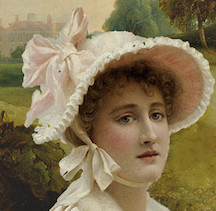 Heather has always been a dreamer, going off for hours into a make-believe world peopled by imaginary characters. From the age of about seven, when she won a third prize for a story written at school, she has enjoyed writing almost as much as reading. Devouring a book in one sitting is nothing new to her. Already keen on history, when she read her first Georgette Heyer Regency novel in her teens, she was at once hooked on the era and the genre.
Heather has always been a dreamer, going off for hours into a make-believe world peopled by imaginary characters. From the age of about seven, when she won a third prize for a story written at school, she has enjoyed writing almost as much as reading. Devouring a book in one sitting is nothing new to her. Already keen on history, when she read her first Georgette Heyer Regency novel in her teens, she was at once hooked on the era and the genre.
Nowadays she divides her time between her animals, beta reading/critiquing for other authors, writing historical romantic fiction and short stories for magazines. Writing as Vandalia Black, she has recently released a collection of Vampire Romance short stories which includes a novella set in the English Civil War.
Website • Facebook • Goodreads
Amazon Author Page
Other Releases
An Improper Marriage
Marriage to dull ironmaster Jeremiah Knight would be awful enough, but when Eleanor Honeybourne discovers an injured man at a ball, she uncovers a web of intrigue that puts her own and her stepfather’s lives at risk. Meeting again her childhood hero, Charles Ribblesford, she is forced into a situation which could well spell her ruin, unless they can solve the mystery and unmask the villain.
Amazon.uk • Amazon.com
The Middle Of The Day
Lottie Morgan loves all things Regency, but would she like to live in the early nineteenth century, married to a baron? A strange thing happens while she is visiting Berrington Hall; she finds herself confronting George, Lord Rodney and she is a newly-wed!
Amazon.uk • Amazon.com
Writing as Vandalia Black:
Vampires Don’t Drink Coffee And Other Stories
This collection of fourteen tales brings together irresistible heroes and memorable heroines who battle against demons, muggers, lost loves, loneliness and unholy thirst to find their true loves. Tortured and honourable vampire heroes and one lady for whom the search for her mortal love has lasted centuries, will sweep you away into a paranormal world where eternal love means exactly that.
Amazon.uk • Amazon.com
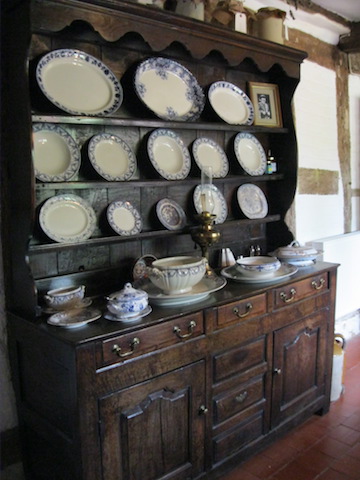 Over the years the house was adapted by each successive generation that lived here, the original medieval great hall had an upper floor inserted into it by the Barneby family, in order to accommodate their many children.
Over the years the house was adapted by each successive generation that lived here, the original medieval great hall had an upper floor inserted into it by the Barneby family, in order to accommodate their many children. The Estate runs traditional livestock breeds, such as Hereford cattle and Ryeland sheep. However the main point of sustainability lies in the conservation and preservation of the traditional orchards. The Estate boasts some magnificent orchards, some of the most extensive in the National Trust’s care. Over 50 hectares (124 acres) is dedicated to trees bearing cherries, apples, pears, damsons and quince. The orchards are rich in bird, mammal and insect life, and provide habitats and forage for many important species. Two rare species have made the orchards their home, the mistletoe weevil and the noble chafer beetle. The orchards are part of an ongoing restoration project, and over the winter of 2011 a further 75 fruit trees were planted.
The Estate runs traditional livestock breeds, such as Hereford cattle and Ryeland sheep. However the main point of sustainability lies in the conservation and preservation of the traditional orchards. The Estate boasts some magnificent orchards, some of the most extensive in the National Trust’s care. Over 50 hectares (124 acres) is dedicated to trees bearing cherries, apples, pears, damsons and quince. The orchards are rich in bird, mammal and insect life, and provide habitats and forage for many important species. Two rare species have made the orchards their home, the mistletoe weevil and the noble chafer beetle. The orchards are part of an ongoing restoration project, and over the winter of 2011 a further 75 fruit trees were planted.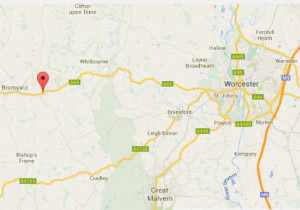

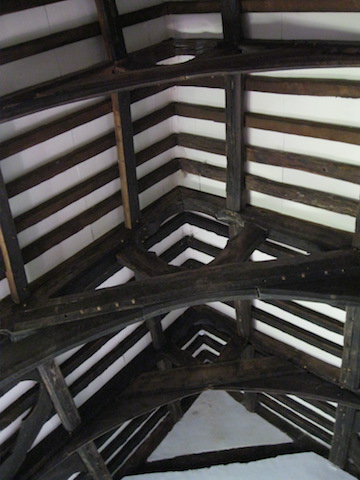







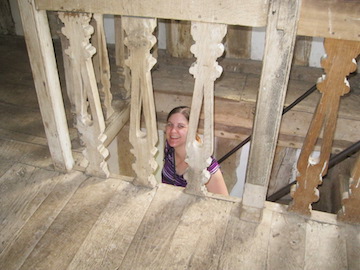










![Shops on the Pulteney Bridge By Erebus555 at English Wikipedia [CC BY-SA 3.0 (http://creativecommons.org/licenses/by-sa/3.0) or GFDL (http://www.gnu.org/copyleft/fdl.html)], via Wikimedia Commons](https://susanaellisauthor.blog/wp-content/uploads/2015/06/shops_on_pulteney_bridge.jpg?w=714&h=474)
![Sydney Gardens By Plumbum64 (Own work) [CC BY-SA 3.0 (http://creativecommons.org/licenses/by-sa/3.0)], via Wikimedia Commons](https://susanaellisauthor.blog/wp-content/uploads/2015/06/a_footbridge_over_the_kennet_and_avon_canal_in_sydney_gardens_bath_dated_1800_designed_by_john_rennie_kennet_and_avon_canal.jpg?w=714&h=506)

![Theatre Royal, Bath By MichaelMaggs (Own work) [CC BY-SA 2.5 (http://creativecommons.org/licenses/by-sa/2.5)], via Wikimedia Commons](https://susanaellisauthor.blog/wp-content/uploads/2015/06/theatre_royal_bath.jpg?w=714&h=658)






